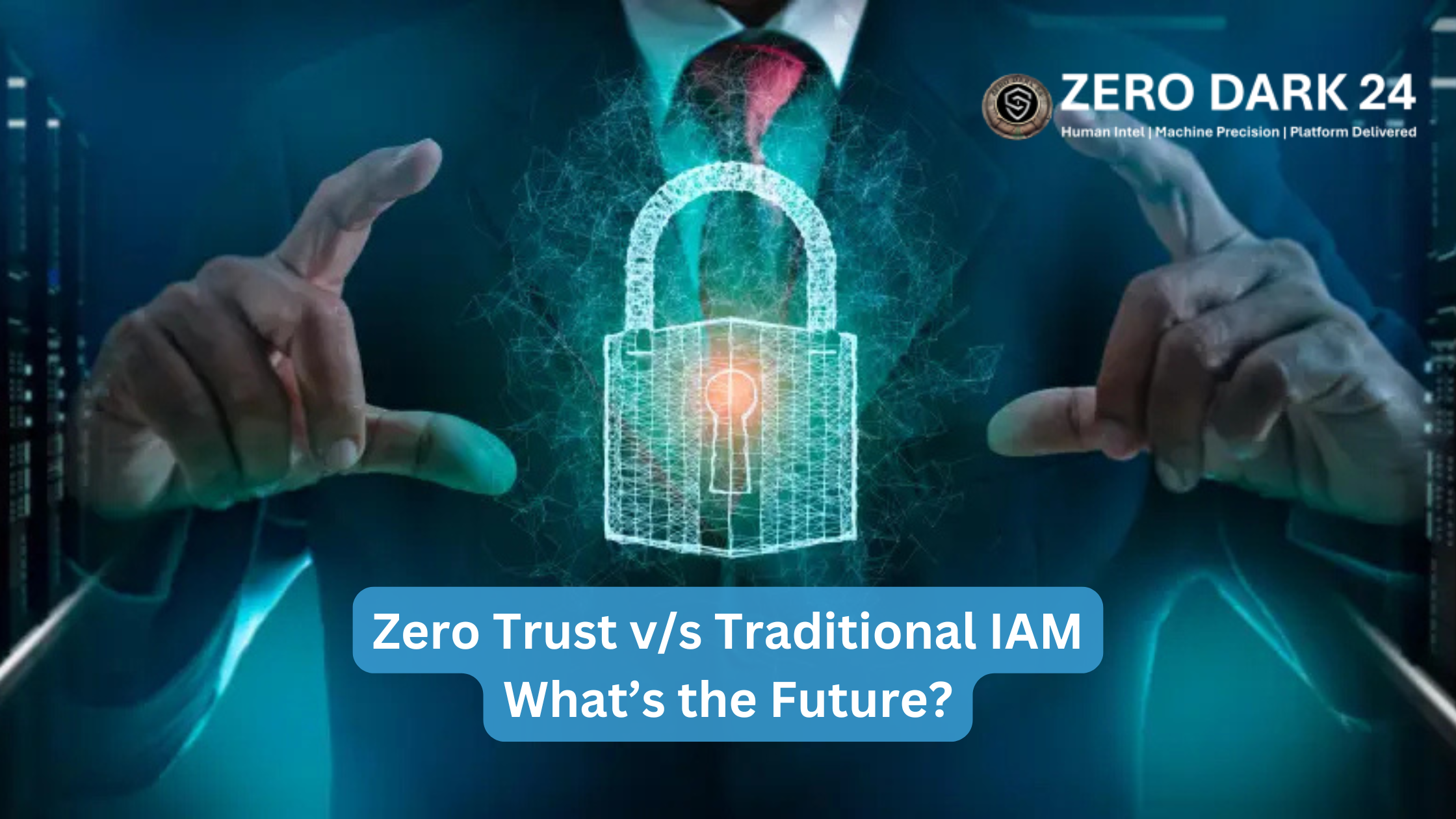
Zero Trust vs. Traditional IAM: What’s the Future?
In today’s rapidly evolving cybersecurity landscape, organizations face increasing threats that traditional security models struggle to contain. Zero Trust security is emerging as the leading framework for identity and access management (IAM), addressing the limitations of conventional IAM models. This blog explores the differences between Zero Trust vs. traditional IAM, why organizations are shifting towards Zero Trust architecture, and how businesses can implement Zero Trust cybersecurity for maximum protection.
Understanding Traditional IAM
Traditional IAM operates on a perimeter-based security approach. The core principle is to verify users at the point of access, after which they are generally trusted within the network. Key components of traditional IAM security include:
- Username and password authentication
- Role-based access control (RBAC)
- Single sign-on (SSO)
- Multi-factor authentication (MFA)
- Directory services like Active Directory
While these IAM methods have been effective for many years, they rely on the assumption that users inside the network are inherently trusted. This model, however, has weaknesses, particularly in an era of remote work, cloud security threats, and data breaches.
The Shift to Zero Trust Security
Zero Trust security model challenges the traditional IAM approach by assuming that no user or device should be automatically trusted, regardless of their location. It follows the principle of “Never trust, always verify.” Instead of providing broad access once authenticated, Zero Trust authentication continuously enforces security policies based on real-time risk assessments.
Core principles of Zero Trust security framework include:
- Least privilege access: Users only get access to the resources they need, nothing more.
- Continuous verification: Authentication and authorization are dynamic and based on context, such as device security posture and user behaviour.
- Micro-segmentation: The network is divided into small zones to limit lateral movement in case of a breach.
- Assumed breach mindset: Security teams operate under the assumption that an attack could be ongoing at any time.
- Multi-layer authentication: Combining MFA, identity analytics, and AI-driven anomaly detection for access control.
Why Zero Trust is the Future of Cybersecurity
Several factors are driving the adoption of Zero Trust architecture over traditional IAM models:
- Cloud and Remote Work: Employees now work from anywhere, using multiple devices and accessing cloud applications, making perimeter-based security ineffective.
- Increased Cyber Threats: Phishing attacks, ransom ware, and credential theft have grown, highlighting the risks of implicit trust.
- Regulatory Compliance: Many compliance frameworks, such as NIST, GDPR, and CISA Zero Trust Maturity Model, encourage Zero Trust implementation to enhance data protection.
- AI and Automation in Zero Trust: Advanced AI-driven threat detection and automated response mechanisms make Zero Trust cyber security more efficient and effective.
- Third-Party and Supply Chain Risks: Organizations must secure access for vendors, contractors, and external partners, reducing attack surfaces through continuous verification and adaptive security controls.
Challenges in Implementing Zero Trust Security
Despite its benefits, transitioning from legacy IAM to a Zero Trust security model presents challenges:
- Complexity: Implementing Zero Trust network access (ZTNA) requires a shift in mindset, new technologies, and a phased approach.
- Cost Considerations: While long-term security benefits outweigh costs, initial investments in Zero Trust cybersecurity solutions can be significant.
- User Experience: Continuous authentication and access controls can sometimes create friction, requiring a balance between security and usability.
- Integration with Legacy Systems: Many organizations still rely on outdated infrastructure that may not support Zero Trust security frameworks.
How Zero Dark 24 Can Help Implement Zero Trust Security
At Zero Dark 24, we specialize in helping organizations transition from traditional IAM to Zero Trust architecture. Our expertise in identity security, AI-driven analytics, and continuous monitoring ensures that your organization stays ahead of evolving cybersecurity threats. Whether you are looking to enhance authentication security, implement micro-segmentation, or automate access controls, we provide tailored solutions to strengthen your cyber resilience.
Organizations looking to enhance their cybersecurity posture should begin evaluating Zero Trust frameworks with a trusted partner. Contact Zero Dark 24 today to explore how we can help you secure your digital infrastructure with a Zero Trust approach.